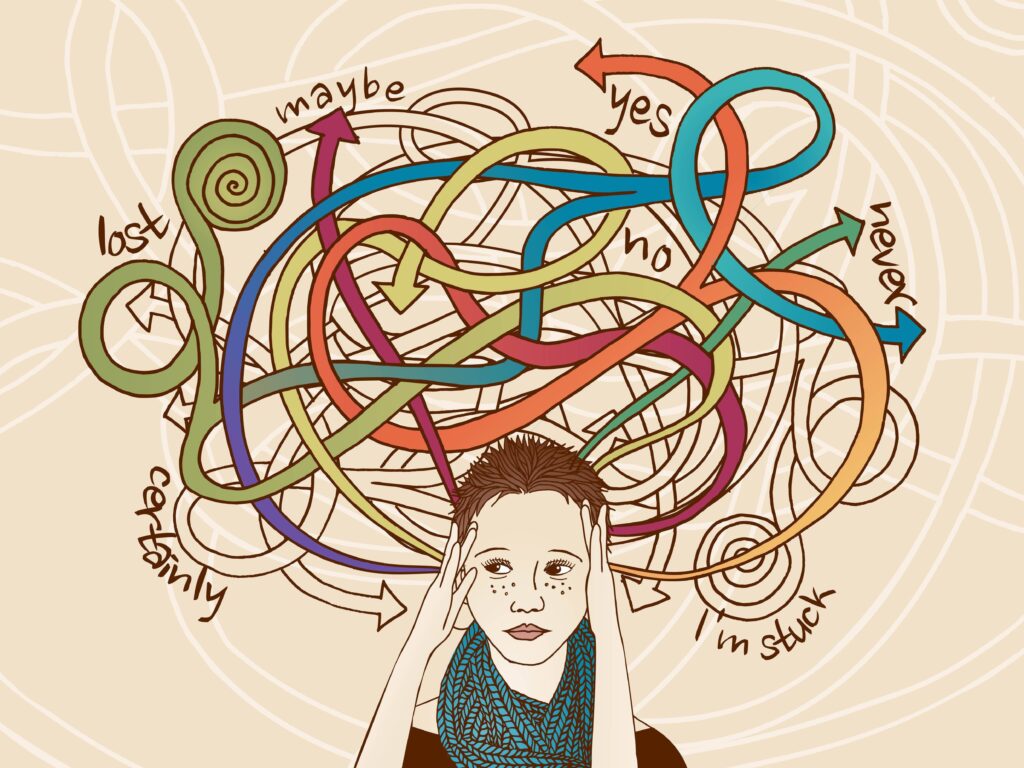I’ve been spending time in lessons this week – just dropping in and out of classes for a few minutes. It’s good to see what’s happening in the various areas, to talk to students about how they are finding things and take the pulse of learning.
But it’s not easy to do. You might think that if the teaching is clear, and the students attentive, all should be well. But in fact, that’s not always the case. Learning is a very messy process, and hard to know about – not just because students vary, hormones intervene, blood sugar changes over the course of the day – but simply because while clear thinking is the goal for students, simple, precise and clear explanations are not always the best route to that end. In fact, often the best sign of learning is that the students are puzzled and frustrated.
This may be counterintuitive, but to see why, look at this puzzle below, and then have a think about what will happen (best to do in a group if you can).
Then watch the first 1:10 of this second video to see the answer. Most non-physicists are surprised; some students think it’s a hoax! most people are surprised and are very keen to know more. That’s the motivation provided by confusion. Do note your own internal reaction before you watch the rest of the video.
When this is shown in class (I use it the Theory of Knowledge, to focus on intuition, evidence and truth), there is often confusion and debate, and disagreement. The class can erupt into chaos and noise, with conversation stretching to other examples – birds, aeroplanes, javelins. It’s interesting to contrast this with the traditional quiet, attentive class where the focus on the laws of motion (or whatever) is laser-like, and the students are hanging on the teacher’s every word.
It’s hard to be sure, but my guess is that the latter lesson is not nearly as effective as the former. And the reason is that, as Steve Kolowich puts it, we need to confuse students to help them learn. Kolowich draws on a classic experiment where two instructional videos were made and shown to students. The first featured an actor explaining a basic physics concept in a traditional way using drawings and animations. The second was a video of a mock conversation between a teacher and student. The student initially struggled to understand the concept, and the tutor asked questions, but never actually explained the answer – which the student eventually got. Students who watched the two videos said the first one was clear, concise, and easy to understand and the second was confusing.
But when students were tested on their understanding of the concept – that is, on their actual learning, students who had watched the second one actually learned more – even though they did not feel that way!
So a little confusion can prompt students to think harder and improve their understanding of complex matters, even if it’s a bit uncomfortable for them. That’s actually not a surprise – in fact it’s built into our Learning Principles which are the foundation of our teaching; one of which states learners construct meaning by making connections between knowledge and concepts. That is, learning happens as a result of students making their own meaning – not being told it, or given it, or getting it by dictation, or copying. And what better way to make meaning than by being puzzled, confused and not being told the answer so you have to debate with your peers?

Of course total confusion is not a good thing – clarity around what we are doing, and why we are doing it is important. But that’s instrumental – the really important intellectual clarity needs to be hard-won, and like so many valuable things, may come over time, through struggling with difficult ideas.



2 Responses
This is real cool stuff. Teachers these days have a lot of resources to make teach difficult concepts. Thanks for your thoughtful perspective.
Thanks for this, Nick. Learning is indeed messy. Ron Ritcchart describes the messiness as ‘Learning occurs at the point/edge of challenge’ .
https://www.cultures-of-thinking.org/7-point-of-challenge